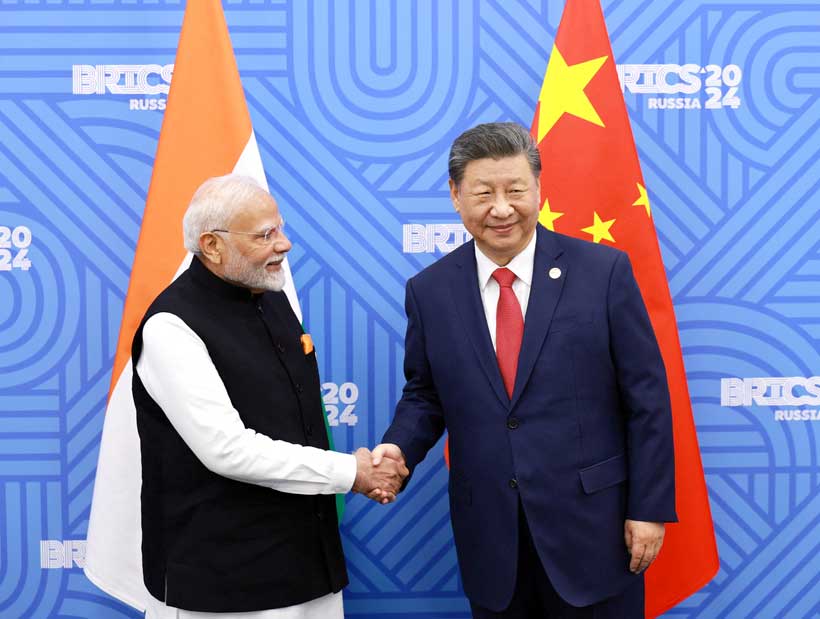Jim James reflects on My Morning Jacket’s enduring legacy of ‘Z’
There’s no shortage of bands commemorating their glory days as decade anniversaries of albums fly by. Yet few landmark releases feel not only fresh but forward-thinking 20 years after they were recorded. My Morning Jacket stumbled onto this kind of brilliance in October 2004 when it released its fourth studio album “Z.” Across 10 tracks of lush, euphoria-driven rock ‘n’ roll, the band captured a notable tone shift in its sound that melded Southern rock, haunting folk, psychedelic soul laced with jam band energy. It’s a set of songs that still make up a huge chunk of the bands live show. In September the band performed the album in its entirety to a sold-out Hollywood Palladium for its 20th anniversary.
“We still play these songs all the time,” said frontman and principal songwriter Jim James in a recent conversation. “So it’s not like we broke up after we released ‘Z’ and then we got back together 20 years later to play these songs, and it’s such a trip. We’ve been playing them nonstop for 20 years.”
Shortly after the release of its 10th studio album “is,” the band put out a deluxe reissue of “Z” that includes four B-sides and a whole album’s worth of demo versions of songs like “Wordless Chorus,” “Off the Record” and Dodante. Recently James spoke to The Times about the enduring power of “Z” and the joy of going back to the beginning of the album’s origins to give himself and his fans a new appreciation for the groundbreaking sound the band created.
The rerelease of “Z” was prefaced earlier this year with a full-album show at the Palladium. What was it like revisiting the album on stage first before it came out (again) on vinyl and streaming?
This is our fourth album now to hit the 20-year mark. So we’ve got some experience now doing these album shows. And it’s funny because some of the earlier albums we don’t play all the songs from them so we had to go back and relearn a lot of songs. But the songs from “Z” we pretty much play all the songs all the time. So it’s pretty hilarious how it involved no effort. It just involved playing them in that order of the sequence of the album. But we kind of laughed about that. We’re like, man, we don’t really even have to do any research or anything. We were all kind of reflecting just on how grateful we are that we like playing all the songs still. It’s such a great feeling to play songs for 20 years and never really get tired of them. People still want to hear them and there’s still excitement there, and they still feel fresh. It’s really a beautiful thing.

This was your first album using an outside producer. What was that like for you as the songwriter to step in the studio with John Leckie to help you realize your vision with “Z”?
It was so great, because I really needed somebody who could work with me and not let our egos clash too much. John was just really great about coming in and respecting what I wanted to do, but also voicing his opinion and what he liked and what he didn’t like and when he thought we could do better. And it was just really so refreshing and so good for us to have him there. I mean, his track record speaks for itself, he’s somebody who you can trust right off the bat, just because of all the things they’ve done in the past. He’s such a soft-spoken gentleman but he also has this hilarious, brutal honesty about him, which was always really great.
Your lineup had also changed between the previous album “It Still Moves” and “Z” — adding keyboard player Bo Koster and guitarist Carl Broemel who are still in the band today. So was that like stepping in the studio with the “new guys” for the first time?
It was really nerve-racking and really exciting all at once. We had some touring experience under our belt with Bo and Carl, so we kind of knew that it was working out on that level, but we’d never really recorded before, so it was a real test for all of us. And I think we all knew that. So everybody brought their A game to the session and we took it really seriously, but we also had a lot of fun and just really kind of got to know each other. That was good to do that out in the middle of nowhere, out there in the Catskills, up at the studio. It gave us some time to really bond without a lot of the real-world stuff coming in or other people coming in. So I think that was really important, that we did it that way.

Do you remember what song came out of the sessions first?
“It Beats 4 U” was the first one, because that was one we had already played live before we started recording. So I think that was the first song that we started messing with. But I think they all were kind of coming to life around the same time. So by the time we got in there to start unpacking them, I had already written them and kind of made the demos of them and stuff.
It’s great that you included so many demo versions of your songs on this rerelease. What was the process like of locating these, sifting through and sequencing which ones you wanted to put on the album?
Well, I love demos for a lot of my favorite bands — I love it when I get to hear the demos from the albums. So I’m always saving all that stuff; with my own stuff I’m always compiling all the demos, because that’s half the fun to me. Because sometimes you get this just like a beautiful glimpse into the song. Quite often, I end up liking the demo more than I like the actual album, song because you get a whole, whole new view of it. It’s also interesting when you’re sequencing for vinyl, because you don’t have unlimited time so you kind of got to pick and choose, and that kind of forces you to just choose the best. There’s a whole other round of band demos and then there were my demos, so there were a lot of things to choose from. But it kind of helps me to look at it in vinyl format. There’s still something about the vinyl time limit that helps with quality control. Just kind of pick the ones that I feel are most effective and then try and make a fun sequence so that hopefully, if somebody’s into them, it’s kind of like you get a bonus album that you can listen to.
We had four true songs, B-sides, that we really love too, that weren’t demos. So that was really nice to finally get those out, because those had been on different soundtracks. And then one wasn’t even released. So I don’t think that those weren’t even on streaming or anything for years and years. So it’s really cool to have those out kind of everywhere now, because I’ve always liked all those songs and been proud of those songs too. And I think most bands know the feeling of you know when you make a record. Sometimes songs just don’t fit the record, even if you still love the songs.

MMJ during the “Z” era.
(Sam Erickson)
Were you playing any of those live at the point where you released the album the first round, or did you shelve them for later?
We’ve always played “Where to Begin” live — off and on. We’ve also tried “Chills” a couple times, and I think we did “How Could I Know” a couple times. We’ve never played “The Devil’s Peanut Butter,” we kinda forgot that one existed until this whole [album rerelease] process started, and I found that song again. So we’ll probably play that one somewhere out on the next leg.

Was this process something that you enjoy doing, like, in terms of your how to, sort of like, reexamine an album?
I really love it because I just feel so grateful that anybody even gives a s–, you know? I mean, so there’s that part of me that’s just so grateful to even still be in the game, talking about this. But beyond that, it’s really cool for me because it’s like jumping in a time machine and going back and looking at that point in my life and getting perspective on where I am now, and seeing how I’ve grown and asking “where have I changed? Where have I not changed?” I look back and with all of these albums as they come up to this 20-year mark, and I see I’ve always been really mean and hard on myself, on Jim, but I know that Jim was doing the best he could at each time. That’s the one thing I’ve always kind of been able to see, to get myself through, to not be too hard on myself. I know I was giving it everything I had, so whether I would change things about it as I am today or not — we all look back on the past, and maybe there’s things we’d do differently, but it gives me a lot of comfort to know that I was trying as hard as I could, and all the guys in the band were trying as hard as they could. It really makes me feel proud of us for just putting in the time and effort.





